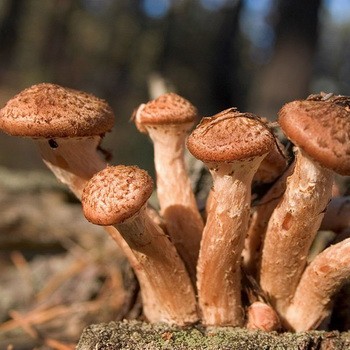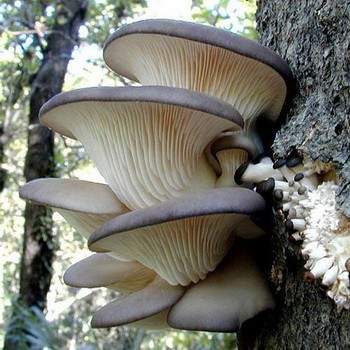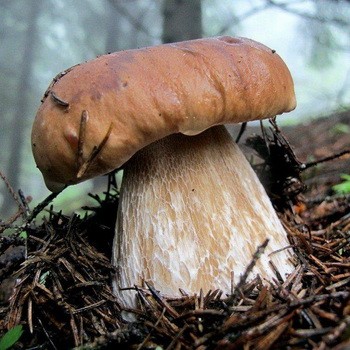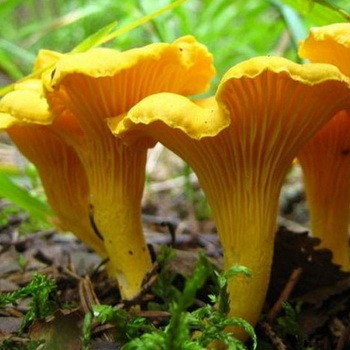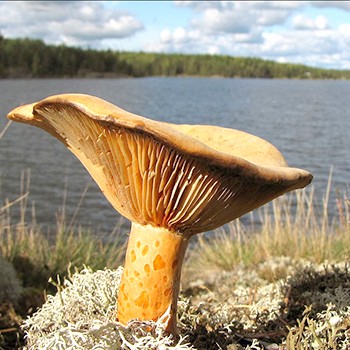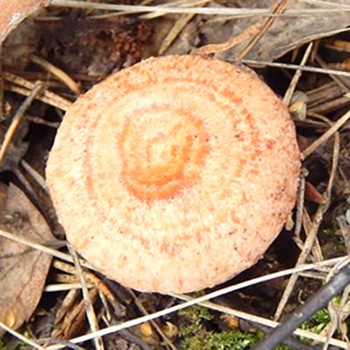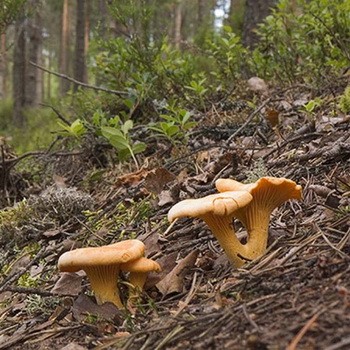The correct collection of chanterelles

It is very difficult to confuse chanterelles with other mushrooms. They have an original appearance - a curly hat resembling a funnel, and an unusual bright fiery color. In addition, these fruiting bodies have one important advantage: due to their unique chemical composition, they have practically no worms. With these mushrooms it is not difficult, because you can take as a basis any processing process: pickling, pickling, cooking, frying, drying, freezing and. t
Increased interest encourages each mushroom picker to collect all the information about the places of collection of chanterelles, so that the "catch" was successful. Otherwise, you will look for mushrooms where they do not grow, and dreams of a good harvest will fail. In addition, it is important to know not only where the chanterelles grow, but also when to collect them in the forest?
Content
Where and when you need to collect chanterelles: the best places and the period of collection
It is known that these unusual fruiting bodies are common throughout Russia and Ukraine. They can be found in almost any forest, but most often - in birch and mixed. Chanterelles are also found in the conifers, but less frequently. And what else can be said about where and when to pick chanterelle mushrooms? The relevant information will help you plan your trip to the forest and collect more than one basket of your favorite fruit bodies.
So, chanterelles prefer to settle on sandy or mossy soil, among marsh humps, on the edges of the forest or open glades. In addition, they can often be found among grass and fallen leaves. As neighbors, chanterelles most often choose birch, oak, beech, spruce, aspen and pine. If the collection season for chanterelles turned out to be rainy, then they begin to look for places closer to the sun's rays.
Fans of the “silent hunt” really appreciate these mushrooms, because neither moisture nor drought spoils them. So, in excessively wet weather, the chanterelles do not rot and do not disappear, worms do not start in them. And with severe drought, mushrooms only suspend growth, but at the same time retain their attractive appearance.
During the collection of chanterelles, you need to be careful, because despite the mottled color, they can not be seen in the grass or under a layer of fallen leaves. I must say that the chanterelles grow whole families, so always have a good look around the area. If you find one mushroom, then surely its relatives hid nearby.
So, now you need to find out the time when the chanterelles are collected in the forest. It is noted that this species of forest inhabitants begins its growth at the end of May, which attracts mushroom pickers very much. However, at this time there may be very few of them, since weather conditions may be unfavorable for early growth.Chanterelles bear fruit until mid-October, and if the weather allows, then until early November. It is better to start collecting chanterelles when mid-June is already marked on the calendar.
Usually, 2 active phases of fruiting of chanterelles are shared: June-early July and mid-August-early October. Especially a lot of them after thunderstorms and autumn fogs. However, it is worth noting that the collection time of chanterelle mushrooms may vary slightly. This is influenced by a number of factors: climate, weather conditions, soil condition, etc. Chanterelles are one of the few mushrooms that grow throughout the summer and autumn. The main conditions for their abundant growth and fruiting are warm weather, sunlight and moderate humidity.
And when you need to collect the chanterelles after the rain? Like other representatives of the mushroom kingdom, chanterelles grow quite quickly. A few days after heavy rainfall, you can go to the forest for a new mushroom crop. To reach the desired size, these fruiting bodies need about 6-9 days. However, do not collect overripe specimens, as they accumulate toxins and salts of heavy metals. In addition, it is important to ensure that the harvest takes place in ecologically clean areas, away from factories, highways and other industrial enterprises. Otherwise, even an edible mushroom can cause serious poisoning.
When can I pick autumn chanterelles: the time of picking mushrooms in the middle lane (with video)
It is possible to precisely answer the question of when to collect the chanterelles, if only we pay attention to weather conditions. By the way, this type of fruiting bodies copes well with heat. As already noted, their growth is suspended until the first warm rains, but the appearance remains the same fresh and beautiful.
Chanterelles harvested in the summer are slightly different from their autumn counterparts. So, they are more nutritious, but less beautiful and fragrant. And what can be said for autumn foxes - when to collect them in the forest? The most suitable time is September. In addition, abundant fruiting of chanterelles is observed with the onset of the so-called "Indian summer". When collecting it is important not to tear out the fruiting body with the root, so as not to damage the mycelium. It is better to use a knife and carefully cut the leg at a distance of 1.5-2 cm from the ground.
The time for collecting chanterelles in central Russia begins in June and ends in October. Here they are often found, and are very appreciated among mushroom pickers for their taste. However, do not forget that the weather can affect the growth and development of chanterelles.
It is also worth noting that chanterelles due to their elasticity lend themselves well to transportation. They do not break or crumble, so they can even be assembled into buckets and bags.
Watch a video of collecting chanterelles in the forest and find out how this fascinating process goes:
